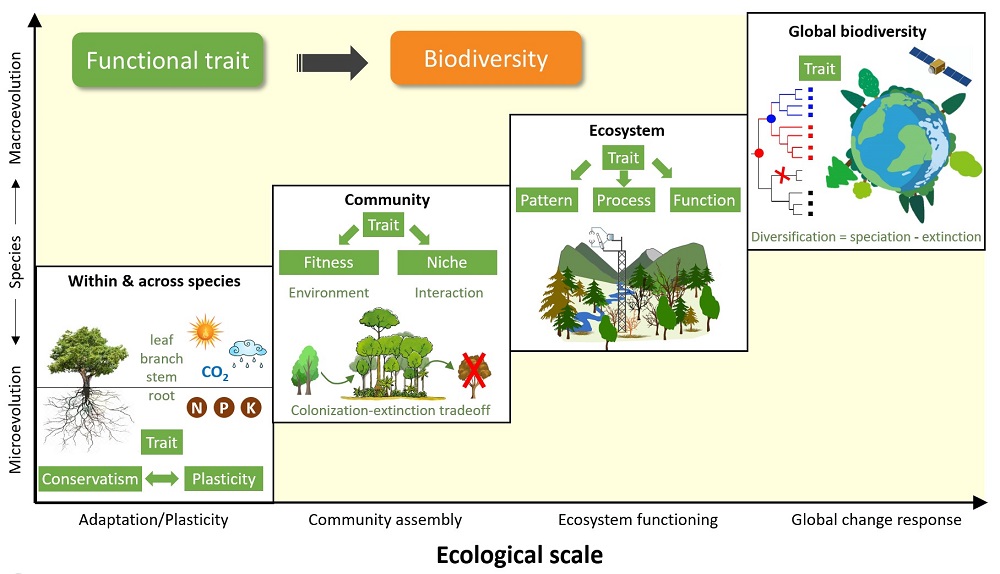How to link plant functional traits to biodiversity under environmental change?
Understanding the mechanisms underpinning the origins, patterns and dynamics of biodiversity is fundamental in biology and ecology. Trait-based ecology emphasizes the importance of functional traits in community assembly and ecosystem properties, however, functional traits can further provide links with biodiversity at broader temporal and spatial scales. Therefore, it is necessary to construct a research framework based on plant functional traits at multiple spatial-temporal scales to assess the impact of global change on biodiversity. This can not only to explore the ecophysiological mechanisms of the formation and maintenance of biodiversity, but also to assist the protection and prediction of biodiversity under future environmental change.
Dr. Hui Liu, an associate professor from South China Botanical Garden, Chinese Academy of Sciences, and scientists in the field of community ecology, ecosystem, and global change biology research, proposed a new perspective to use plant functional traits to analyze and predict biodiversity from different ecological dimensions, with considering the effects of evolution and environment (Figure 1). 1) At the individual and species scales, trait variation in different organs, within and between species is crucial for assessing eco-evolutionary dynamics of speciation, and is also key to responses of species to climate change including growth and death; 2) At the community scale, functional traits lead to niche and fitness differentiation, which are the basis of modern species coexistence theory, and the controversial trait-demography correlations are still gaps for a deep understanding of species coexistence; 3) At the ecosystem scale, plant functional traits and functional diversity jointly drive the Biodiversity-Ecosystem Functioning relationships, and can provide environmental tolerance thresholds at the species and ecosystem levels; 4) At the global scale, plant functional traits can reveal important processes that affect species distribution and global biodiversity, such as key traits that cause speciation or extinction, and the linkages among climatic diversity, geographic diversity, and biodiversity. Finally, phylogenetic diversity, which is parallel to functional diversity, is an important component of biodiversity and the basis for micro- and macro- evolution of species. Phylogenetic niche conservatism and environment jointly affect traits and their plasticity, as well as the coordination and trade-off relationships between traits, leading to fluctuations in communities and biodiversity under environmental change.
This work reviewed roles of plant functional traits in species adaptation and coexistence, biodiversity-ecosystem functioning, species distribution and global biodiversity, and then discussed future trends of biodiversity studies under environmental change. It has been published in Biological Diversity (https://onlinelibrary.wiley.com/doi/full/10.1002/bod2.12004).
First author information: Hui Liu: associate professor, Research Center for Ecology and Environmental Sciences, South China Botanical Garden, Chinese Academy of Science, Research field: Plant functional traits, adaptation and evolution, E-mail: hui.liu@scbg.ac.cn ; Tel :020-37081975.

File Download: